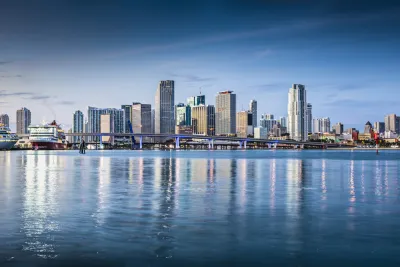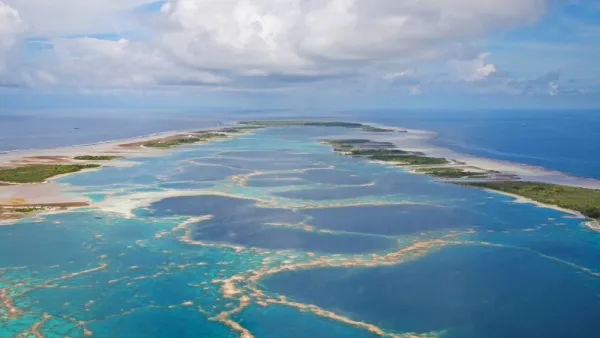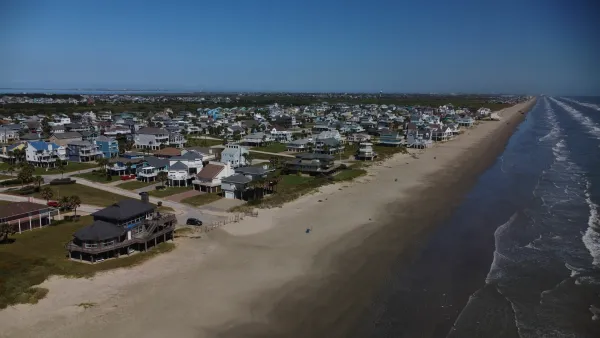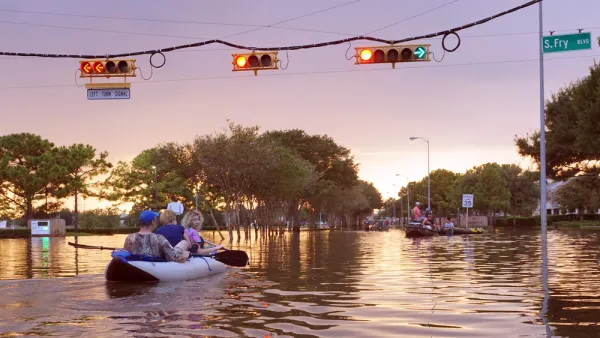Many experts believe that a property crash, as a result of Hurricanes or sea level rise, on the coast of South Florida is inevitable. But that hasn't deterred the suppliers or the consumers in the Miami real estate market.

A longform article by Nathalie Baptiste asks a big question of Florida's second-most populated city: "Why is Miami—America’s most vulnerable metropolis to sea-level rise—having yet another beachfront development boom?"
Baptiste begins by noting the current growth trend in the local development market: "The previous boom halted briefly after the 2008 collapse, but by 2011 it was on again. As of June 2015, more than 355 new towers have been proposed in South Florida." But the current optimism comes with great risk, which both consumers and suppliers seem completely blind to—whether willfully or not. Baptiste includes many pithy paragraphs to make this point, including the following:
The great cliche of the real estate business is that location is everything. That’s especially the case with buildings vulnerable to climate change. A truly green building is structurally sound, energy-efficient, low-cost, and in an area that isn’t vulnerable to sea-level rise and climate-change impacts. So a green building in a bad place is a bad building. In a place like greater Miami, the problem is both too many buildings in the wrong places, and standards that aren’t stringent enough.
Despite the billions of dollars in spending and years of planning it will take to prepare the Miami area for the effects of climate change is almost the opposite of what's happening in Miami, according to the story told in this article. Instead of planning and building safety measures, Miami is subsidizing flood insurance and incentivizing developers in risky areas.
FULL STORY: That Sinking Feeling

National Parks Layoffs Will Cause Communities to Lose Billions
Thousands of essential park workers were laid off this week, just before the busy spring break season.

Retro-silient?: America’s First “Eco-burb,” The Woodlands Turns 50
A master-planned community north of Houston offers lessons on green infrastructure and resilient design, but falls short of its founder’s lofty affordability and walkability goals.

Delivering for America Plan Will Downgrade Mail Service in at Least 49.5 Percent of Zip Codes
Republican and Democrat lawmakers criticize the plan for its disproportionate negative impact on rural communities.

Test News Post 1
This is a summary

Test News Headline 46
Test for the image on the front page.

Balancing Bombs and Butterflies: How the National Guard Protects a Rare Species
The National Guard at Fort Indiantown Gap uses GIS technology and land management strategies to balance military training with conservation efforts, ensuring the survival of the rare eastern regal fritillary butterfly.
Urban Design for Planners 1: Software Tools
This six-course series explores essential urban design concepts using open source software and equips planners with the tools they need to participate fully in the urban design process.
Planning for Universal Design
Learn the tools for implementing Universal Design in planning regulations.
EMC Planning Group, Inc.
Planetizen
Planetizen
Mpact (formerly Rail~Volution)
Great Falls Development Authority, Inc.
HUDs Office of Policy Development and Research
NYU Wagner Graduate School of Public Service





























